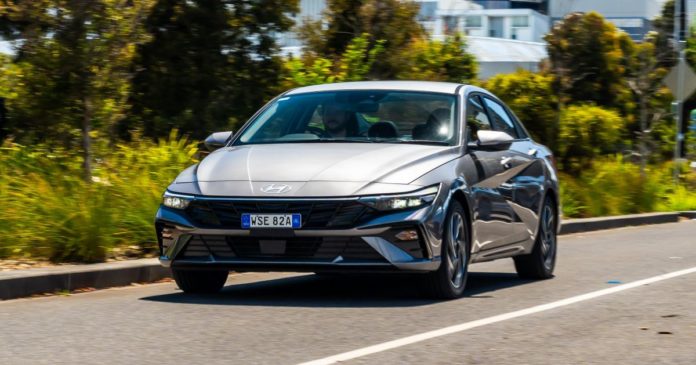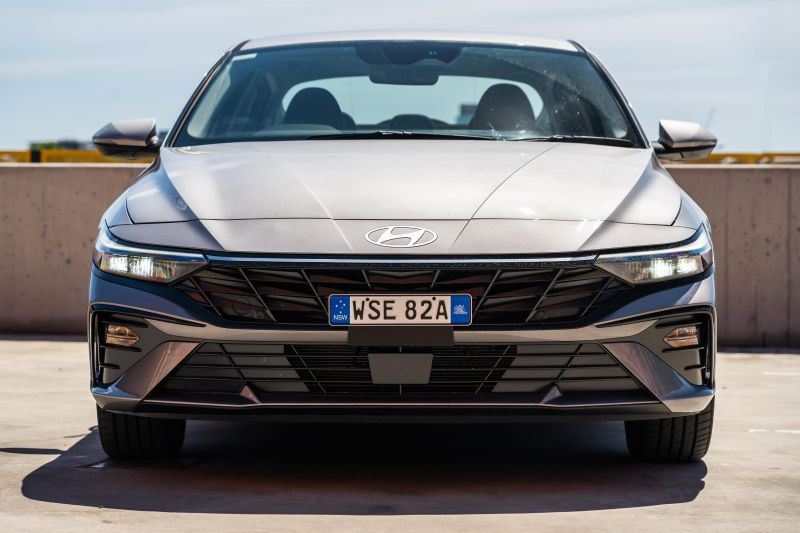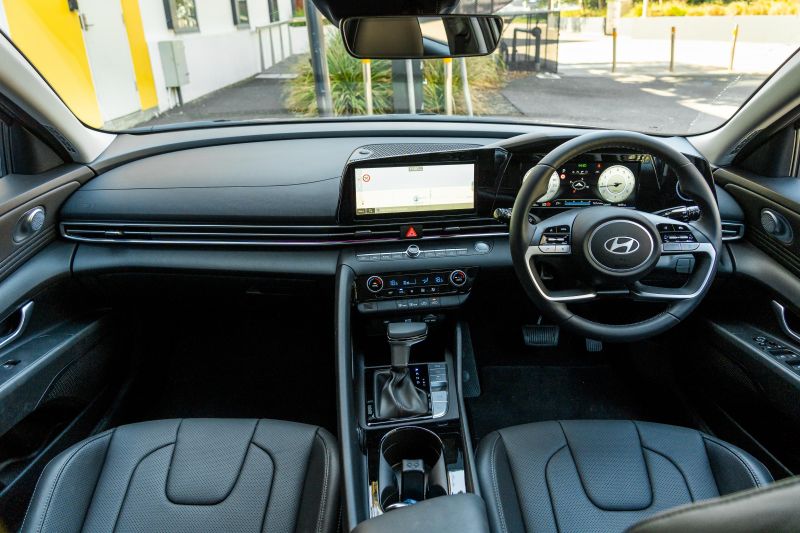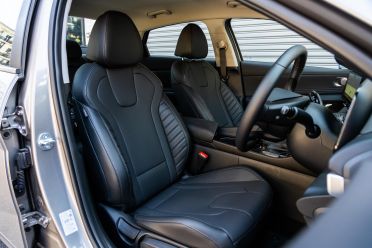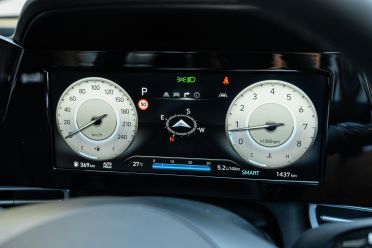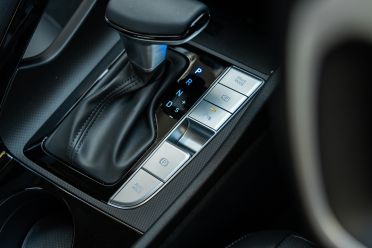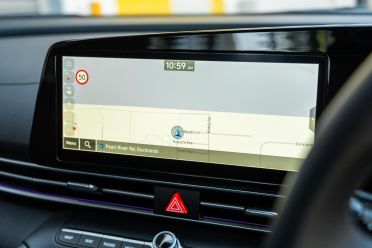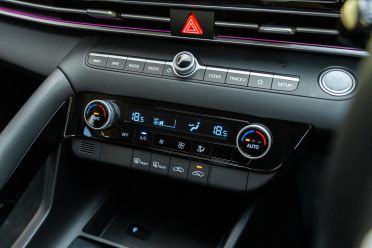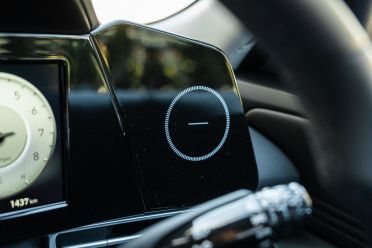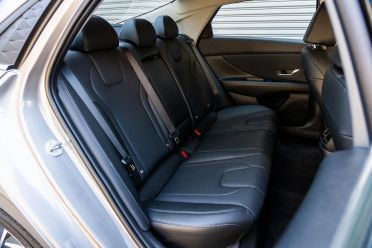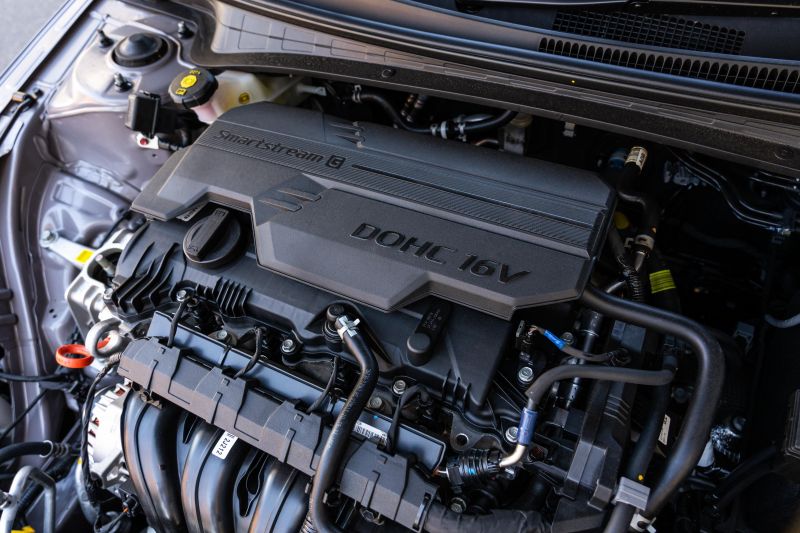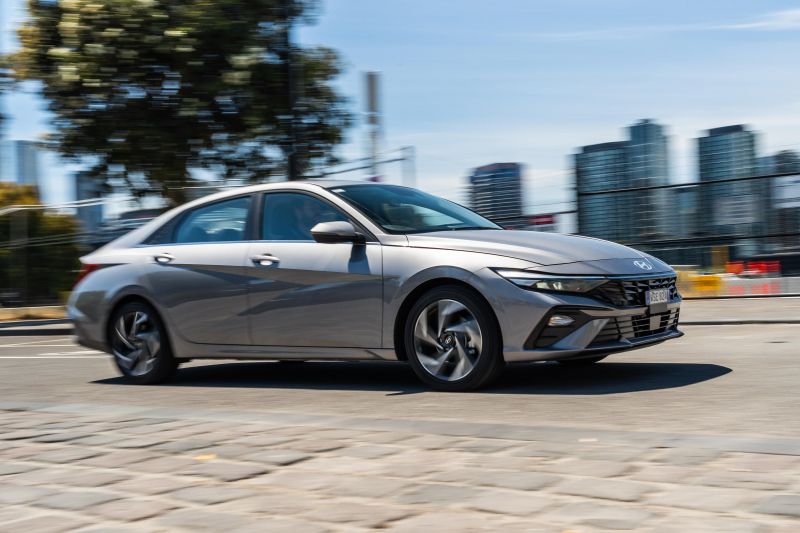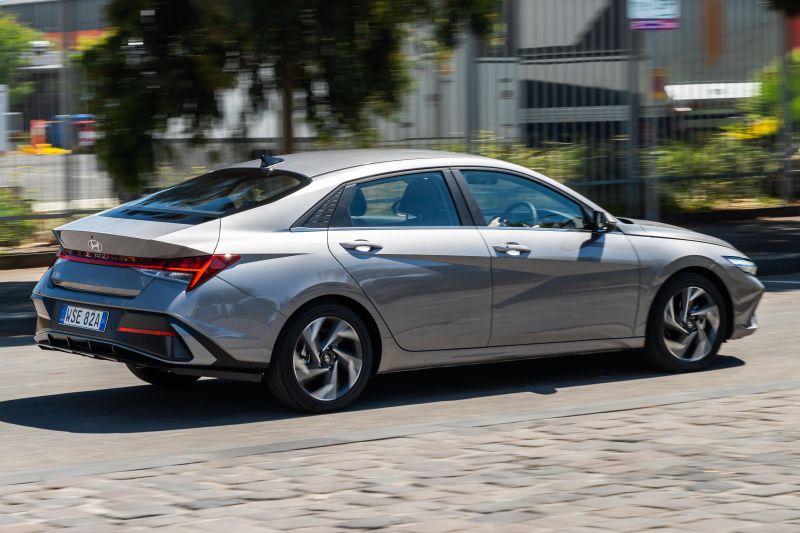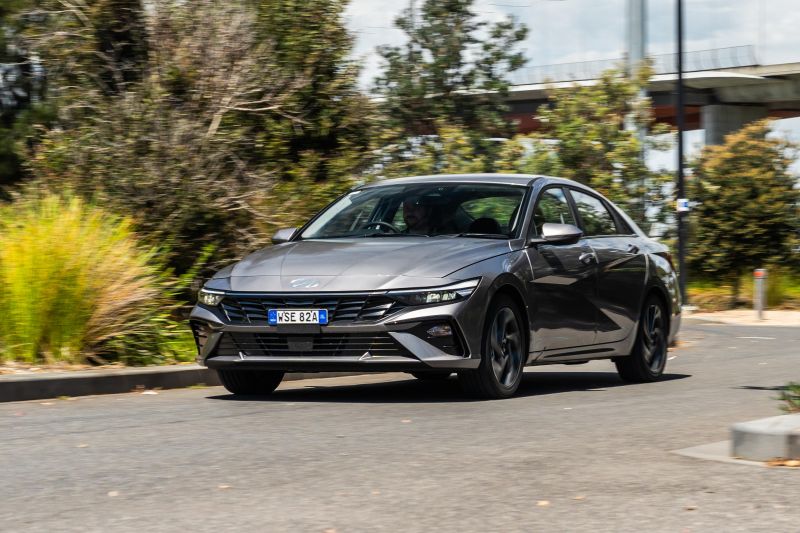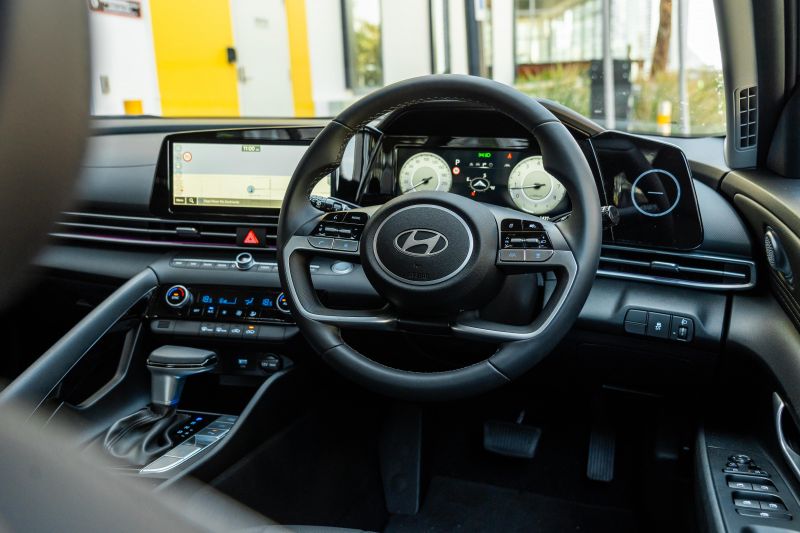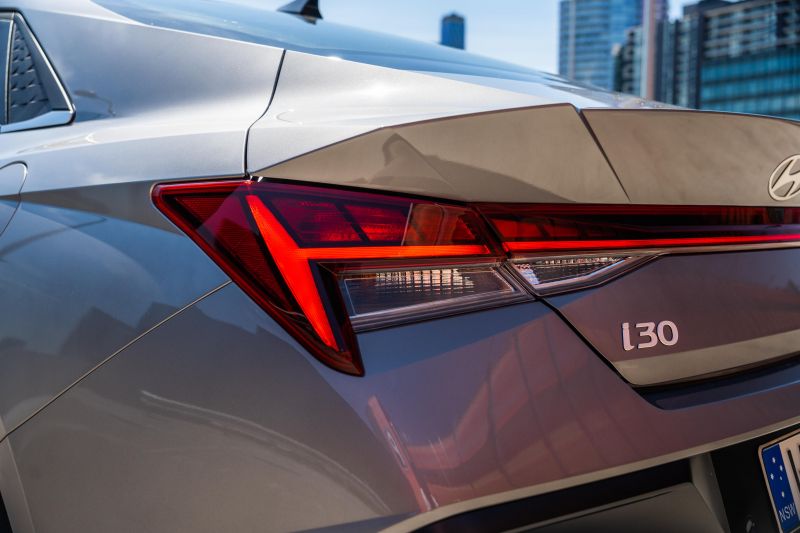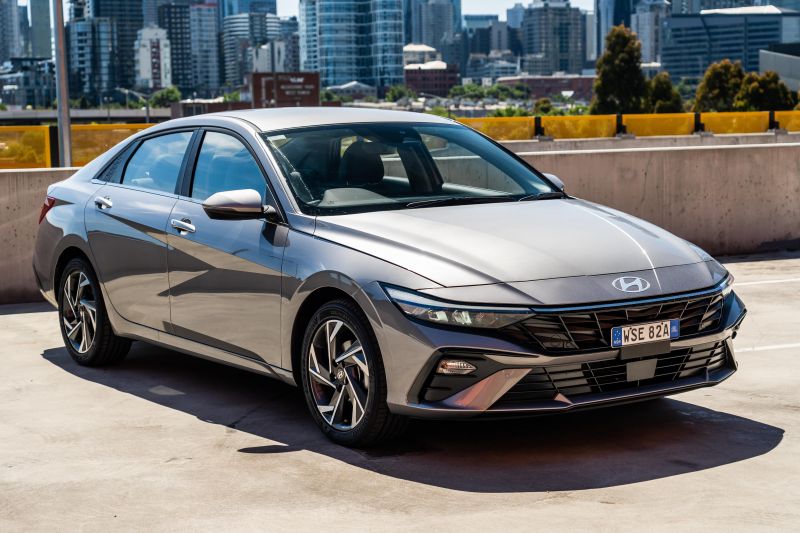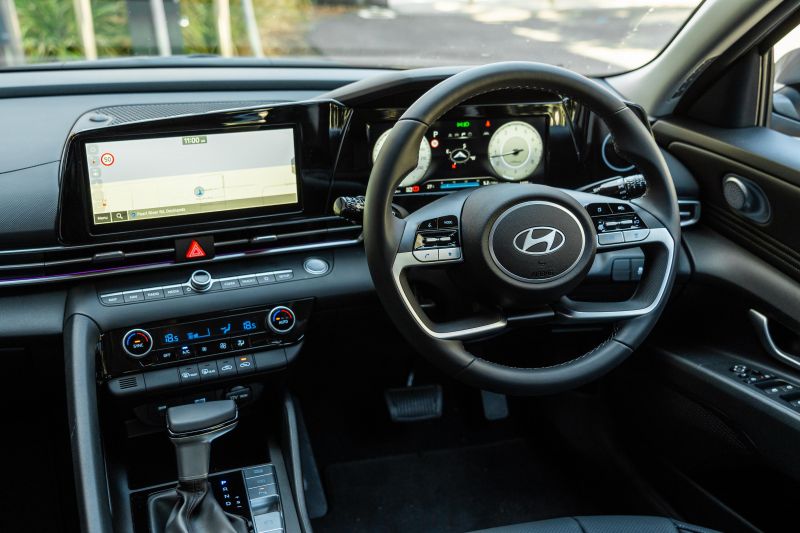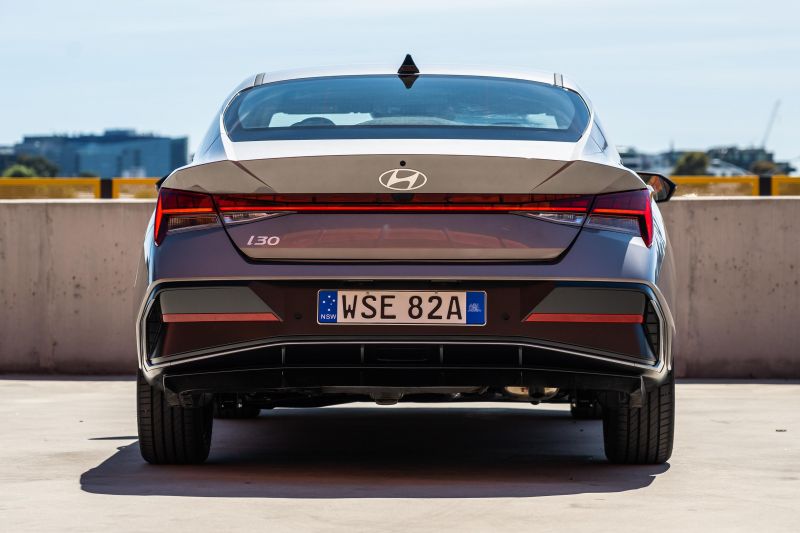The updated Hyundai i30 Sedan has splashed onto the Australian new car scene in an attempt to remind people the small sedan segment exists.
This update brings with it a striking new look on the outside, as well as minor tweaks on the inside. There’s also the inclusion of Hyundai’s Bluelink connected services on certain variants.
The main highlight of the update is the belated introduction of a 1.6-litre hybrid engine. What we have on test here however is a mid-spec 2024 Hyundai i30 Sedan Elite with the regular 2.0-litre naturally aspirated petrol engine that’s now mated to a continuously variable transmission (CVT) instead of a six-speed torque-converter automatic.
Has this update been comprehensive enough to make you consider it, and does the i30 Sedan Elite form as the pick of the range? Read along to find out.
How does the Hyundai i30 fare vs its competitors?
View a detailed breakdown of the Hyundai i30 against similarly sized vehicles.

Hyundai
i30
How much does the Hyundai i30 cost?
Hyundai i30 Sedan pricing:
- 2024 Hyundai i30 Sedan
- 2.0 petrol: $29,000
- 1.6 hybrid: $33,000
- 2024 Hyundai i30 Sedan Elite
- 2.0 petrol: $33,500
- 1.6 hybrid: $TBD
- 2024 Hyundai i30 Sedan Premium
- 2.0 petrol: $38,500
- 1.6 hybrid: $TBD
- 2024 Hyundai i30 Sedan N Line
- 2024 Hyundai i30 Sedan N Line Premium
Prices are before on-road costs
To see how the i30 compares to its rivals, line it up with any of its rivals using our comparison tool.
What is the Hyundai i30 like on the inside?
Walking up to the Hyundai i30 Sedan Elite you’re presented with subtle lights in the door handles which is a cool touch at night. There are also buttons for the proximity entry function.
Like a number of small sedans the i30 Sedan is fair way to get down into. Despite this it’s still surprisingly easy to climb in and out.
As standard there is black leather upholstery with perforations that allows for some air to pass through while you’re driving. There aren’t ventilated seats offered on our tester, nor heated seats. If you want these features you’ll need to step up to the Premium.
The driver’s seat is manually adjustable, which isn’t the end of the world as once you’ve dialled in your seating position it’s really comfortable. You’re really hugged in by the side bolsters, though some more thigh support wouldn’t go astray.
Ahead of the driver is a steering wheel wrapped in buttery soft leather. There are also interesting plastic textured elements underneath where your hands sit.
All the buttons and switches on the steering wheel are thankfully physical ones, and have a clicky and satisfying action. The icons all make sense, though I would occasionally forget which side was for the cruise control and the multimedia controls.
Behind the steering wheel is a 10.25-inch digital instrument cluster that hasn’t changed with the update. It’s high-resolution and is still legible even in bright sunlight.
Plenty of different configurations can be set up in the digital instrument cluster. You can either do this manually or have them change depending on the drive mode you’re in.
The middle of the instrument cluster can also display a range of informative pages including your trip computer, digital speedometer, adaptive cruise setup, compass, and tyre pressure monitoring. It’s a little annoying how the speedometer can’t be displayed when another page is active, however.
The 10.25-inch touchscreen infotainment system has also been retained from the pre-update i30 Sedan. The system is great, but I would have liked Hyundai to put the new connected car Navigation Cockpit (ccNC) operating system from the Kona SUV in it.
The touchscreen appears to have enough processing power, which means it boots up quickly upon startup and new pages load snappily. Swiping around is easy, though reaching the far side of the screen from the driver’s seat is a bit of a stretch.
Bluelink connected services are offered as standard in the i30 Sedan Elite, which includes functions such as connected satellite navigation, voice recognition, emergency calling, and remote climate control, among others.
Given the updated i30 Sedan still runs the existing operating system it only offers wired Apple CarPlay and Android Auto. With my iPhone 15 Pro Max plugged in I didn’t experience any dropouts, which is how it should be.
Looking around the cabin there are softer touches on main touch points like the armrests, though harder plastics are still prevalent. This is one of the major downfalls of the i30 Sedan’s interior as it doesn’t look and feel as premium as some of its rivals, such as the Mazda 3.
There is also some piano black on the centre console, which got really dusty and grimy after the week of driving the car – and was scratched from cleaning.
The cool divider between the driver and front passenger has been retained with the update, though it’s still made of rock-hard plastic. Interestingly it doesn’t flex and creak as much as a pre-update model I previously sampled.
A cool feature on the centre console is the switchable cupholder insert allowing for different sized drinks to fit into the spot.
Before heading to the second row, the i30 Sedan Elite’s standard six-speaker sound system on paper isn’t fantastic but in reality punches above its weight. If you’re after something with a bit more oomph, you’ll need to step up to the Premium which gets an eight-speaker Bose premium sound system.
Despite being a small car the i30 Sedan has oodles of space in the second row. It’s really the place to be and I can see why these kinds of cars are so popular with rideshare drivers.
At a leggy 182cm tall I had plenty of head, leg, and shoulder room. Two adults fit in the second row easily, though having someone sit in the middle seat makes things a touch squishy.
Second-row amenities include rear console-mounted cupholders, USB-C ports, as well as a fold-down armrest with cupholders. There are also the requisite child-seat mounting hardware (ISOFIX and top-tether points).
Moving to the boot, the space on offer is palatial. Hyundai quotes an official boot capacity figure of 447 litres, which doesn’t sound amazing on paper, but in reality it’s properly deep. One downside that’s inherent to sedans though is the boot opening is a little small.
There really aren’t many features or notable amenities in the i30 Sedan’s boot, which is common among sedans, apart from triggers for folding the rear seats.
The Hyundai i30 Sedan Elite comes standard with a full-size spare wheel which is crucial among rural and regional buyers. This means when you get a flat tyre you don’t have to keep under 80km/h on the pizza cutter-like space saver spare wheel.
What’s under the bonnet?
| Model | Hyundai i30 Sedan 2.0 |
|---|---|
| Engine | 2.0-litre 4cyl petrol |
| Power | 110kW |
| Torque | 180Nm |
| Transmission | Continuously variable transmission (CVT) |
| Driven Wheels | Front-wheel drive |
| Weight | 1260kg (kerb) |
| Fuel economy (claimed) | 6.1 litres per 100km |
| Fuel economy (as tested) | 5.4 litres per 100km (1100km mixed driving, rural skew) |
| Fuel tank | 47 litres |
| Minimum fuel requirement | 91 RON |
The Hyundai i30 Sedan is also available with a 1.6-litre four-cylinder hybrid powertrain, a 1.6-litre turbocharged four-cylinder petrol engine in N Line trims, as well as a high-performance 2.0-litre turbocharged four-cylinder petrol engine in N trims.
To see how the i30 compares to its rivals, line it up with any of its rivals using our comparison tool.
How does the Hyundai i30 drive?
Starting up the Hyundai i30 Sedan Elite is made easy as you only have to press a button on the dashboard. You can also remotely start the car using a button on the key fob, or by using the Bluelink phone app.
Once the engine fires it idles a little high and harshly for the first few moments before it warms up, though once warm it’s virtually silent.
Setting off you certainly won’t be winning any land speed records. Acceleration from the 2.0-litre naturally aspirated four-cylinder petrol engine is docile to say the least, but it will get you where you need to go without much fuss.
There are a number of drive modes available in the i30 Sedan. Throughout the majority of everyday driving around suburbia the ‘Smart’ driving mode feels like it’s getting the most out of the engine.
As part of the update, the 2.0-litre engine is now mated to a continuously variable transmission (CVT) instead of a six-speed torque-converter automatic. It’s obviously geared towards efficiency and keeps the revs down low for the most part, but it also sucks some of the life out of the engine.
There are no simulated gears in the i30 Sedan’s transmission, unlike some other CVT-equipped vehicles, which makes the engine a little droney at points under acceleration. The transmission can also act like an elastic band.
The i30 Sedan has really light steering which makes low-speed manoeuvrability a piece of cake. This is aided by the small sedan having a surprisingly sharp turning circle (10.8 metres).
As standard the i30 Sedan Elite comes with front and rear parking sensors, as well as a reversing camera. If you want a surround-view camera you’ll need to step up to the Premium. You’ll also receive rear autonomous emergency braking and a Blind Spot View Monitor in the digital instrument cluster.
Around town and in the city the i30 Sedan Elite is incredibly compliant. The car soaks up speed bumps with no worries at all.
Building up speed in the i30 Sedan is where it feels less at home. You really need to push the car to accelerate quickly to highway speeds, and there will be plenty of revs as a result.
Once you’re cruising the engine finds a comfortable groove, though with even a whiff of an incline there will be an annoying rev flare. On steeper hills the revs can sometimes go beyond 3000rpm, which made me grit my teeth every time.
Despite this gripe, you can’t deny the i30 Sedan is efficient. This could put down to how efficient the CVT is, as well as how aerodynamic the sedan body shape is.
During my testing in metropolitan Melbourne I frequently saw fuel economy figures hovering around 5.0 to 6.0L/100km, though on the freeway the best average I achieved was 4.6L/100km. That’s hybrid-rivalling fuel economy.
Unlike in the city, the ride can be little busy at points when travelling along highways. Thankfully the 17-inch alloy wheels with tyres that have plenty of sidewall iron the majority of this out, but this is one notable downfall of the core i30 Sedan’s rear torsion-beam suspension setup.
The i30 Sedan Hybrid on the other hand, which we’re yet to drive on local soil, features a more sophisticated multi-link rear suspension setup.
Our tester in particular had a really annoying rattle that would only present itself when travelling at 100km/h or beyond. It sounded like it was coming from the passenger-side door, or the underbody section; I would try to drown this noise out with turning up my music, but for the most part this didn’t fix the problem.
We reached out to Hyundai Australia about this problem after the car was returned and they later found and fixed a broken/damaged clip and bolt located underneath the car.
On the safety front, there were also other issues I experienced with this car. At multiple points throughout my loan all the car’s safety systems would switch off for some reason. When this happened the instrument cluster would light up like a Christmas tree and there would be constant chimes.
Even more strangely, after a minute or two all the safety systems would come back online like nothing had happened. This cycle repeated itself at random points throughout driving the car.
Hyundai Australia says it carried out a Service Point Target Auto Calibration (SPTAC) to fix this issue.
Lastly, around halfway through my loan of the i30 Sedan Elite said there was no fuel left in the tank at all. This is despite me knowing the tank was at least half full.
After driving around for a bit with the car saying it had no fuel whatsoever my nerves got the better of me and I topped up the tank. It was no surprise to me the car only took 20 litres of petrol before the tank was full.
Once I had topped up the fuel tank the car’s fuel readout was back to normal and displayed the correct amount. Hyundai Australia wasn’t able to fault the car’s fuel gauge.
The last thing I’ll mention in this section is the updated i30 Sedan’s safety systems are a little annoying. This isn’t something that’s isolated to just the i30 Sedan, but rather a growing range of newer Hyundai and Kia models.
The most annoying and frustrating of the safety systems is the Intelligent Speed Limit Assist function that plays a chime when you surpass the speed limit for a certain period.
In theory this system should be really helpful to ensure people don’t speed, but at times the car detects an incorrect speed sign and sounds the chime. This is most notable when travelling through school zones when they aren’t active.
The lane-keep assist function works well for the most part, while its Lane Following Assist (lane centring) function can get confused easily. The latter of these systems is best reserved for use on roads or highways that are clearly marked.
What do you get?
i30 Sedan highlights:
- 16-inch alloy wheels
- Full-size spare wheel
- Automatic LED headlights
- LED daytime running lights
- 4.2-inch digital instrument cluster
- 8.0-inch touchscreen infotainment system
- Wired Apple CarPlay and Android Auto
- Six-speaker sound system
- Wireless phone charger
- Front and rear USB-C ports
- Leather-wrapped gear selector
- Leather-wrapped steering wheel
- Electric park brake
- Rear air vents
- Rear centre fold-down armrest
- Premium cloth seats
- Multi-link rear suspension (hybrid only)
- Space-saver spare wheel (hybrid only)
- Dual-zone climate control (hybrid only)
- Rain-sensing wipers (hybrid only)
i30 Sedan Elite adds:
- 17-inch alloy wheels
- LED rear positioning light
- Rain-sensing window wipers
- Power-folding side mirrors
- 10.25-inch digital instrument cluster
- 10.25-inch touchscreen infotainment system
- Satellite navigation
- Bluelink connected services
- Automatic collision notification
- DAB+ digital radio
- Dual-zone climate control
- Ambient interior lighting
- Keyless entry and push-button start
- Remote start
- Auto-dimming rear-view mirror
- Leather upholstery
- Blind-spot assist
- Rear cross-traffic assist
- Safe Exit Warning
Is the Hyundai i30 safe?
The Hyundai i30 Sedan has yet to be tested by ANCAP or Euro NCAP.
It’s worth noting the US’s IIHS awarded the pre-update i30 Sedan’s US-market Elantra counterpart a 2022 Top Safety Pick rating.
Standard safety features include:
- 6 airbags
- Autonomous emergency braking (AEB)
- Car detection
- Motorcycle detection
- Pedestrian detection
- Cyclist detection
- Lane keep assist
- Lane Following Assist
- Rear cross-traffic alert
- Driver attention warning
- Leading Vehicle Departure Alert
- Intelligent Speed Limit Assist
- Adaptive cruise control with stop & go
- Front, rear parking sensors
- Reversing camera
- Tyre pressure monitoring
i30 Elite adds:
- Blind-spot assist
- Rear cross-traffic assist
- Safe Exit Warning
- Bluelink connected services
- Automatic collision notification
- Emergency call function
- Connected routing
- Alert services
- Remote climate control and vehicle functions
- Navigation send to car
- Voice recognition for POI lookup, vehicle controls
- Live weather information
- Vehicle settings management
i30 Premium and N Line Premium add:
- Rear AEB
- Blind Spot View Monitor
- Surround-view camera
How much does the Hyundai i30 cost to run?
The 2024 Hyundai i30 Sedan is backed by a five-year, unlimited-kilometre warranty.
Hyundai Australia offers the i30 Sedan with three different pre-paid servicing packages. The three-year/45,000km package costs $975, the four-year/60,000km package costs $1300, and the five-year/75,000km package costs $1625.
CarExpert’s Take on the Hyundai i30
Even though the small sedan segment is continuing to cool in Australia as more people move to crossovers and SUVs, the Hyundai i30 Sedan has been made fresh once again with this latest update.
The small sedan’s exterior styling, even in regular guise, still makes it stand out on the road. Interior changes are minor however, and it’s a little disappointing the i30 Sedan hasn’t received the company’s new infotainment operating system.
The i30 Sedan is now playing a larger part in Hyundai’s local small car product offerings, until supply of the updated European-sourced i30 Hatch commences.
Despite its compact footprint you can’t deny there’s a surprising amount of space in the second row and boot. Although things can get a little squishy if you want to fit a third person in the second row, I can see why these kinds of small sedans are so popular with taxi companies and rideshare drivers.
Sure the regular i30 Sedan’s 2.0-litre naturally aspirated four-cylinder petrol engine is a little lifeless given it’s now mated to a CVT instead of a torque-converter automatic, but the aerodynamic small sedan is undeniably efficient.
If I was able to achieve sub-5.0L/100km figures in the i30 Sedan with the regular 2.0-litre engine on a frequent basis, I can’t wait to see what I’m able to achieve in the 1.6-litre hybrid launching in Australia imminently.
The Hyundai i30 Sedan Elite forms as the pick of the range if you want the a well-equipped car that offers the full suite of available Bluelink connected car services. The car also comes with the majority of all the available safety systems including blind-spot assist, rear cross-traffic assist, and a Safe Exit Warning.
The only safety systems the i30 Sedan Elite is missing are rear AEB, a Blind Spot View Monitor, and surround-view camera. You’ll need to step up to the i30 Sedan Premium to get these features.
If you’ve got a tighter budget you can save $4500 and opt for the entry-level i30 Sedan. You’ll also have to forgo a number of convenience features like proximity entry and push-button start, rain-sensing wipers, and the dual 10.25-inch display setup.
Click the images for the full gallery
BUY: Hyundai i30 Sedan
MORE: Everything Hyundai i30

